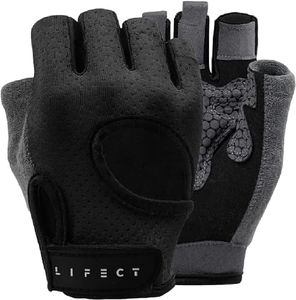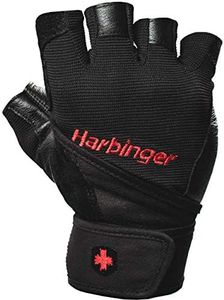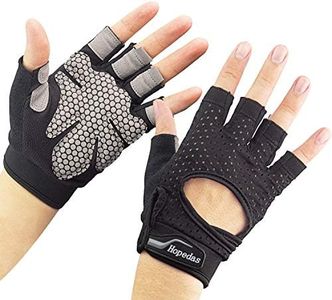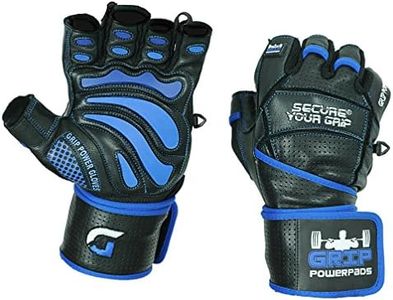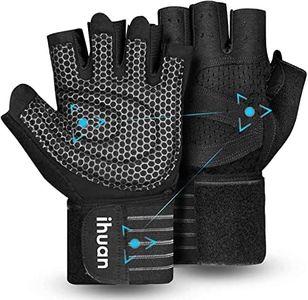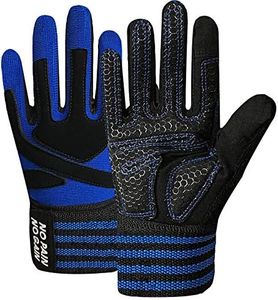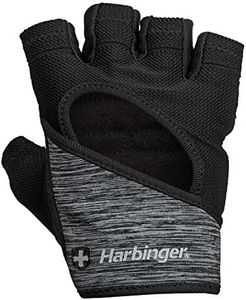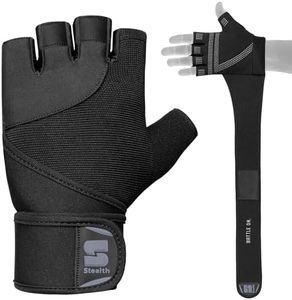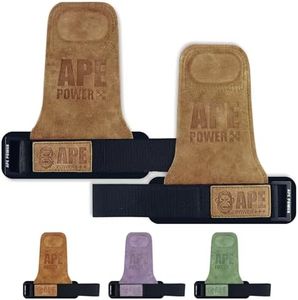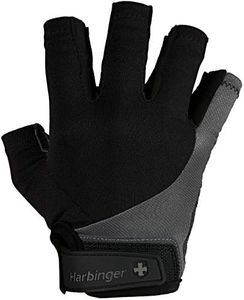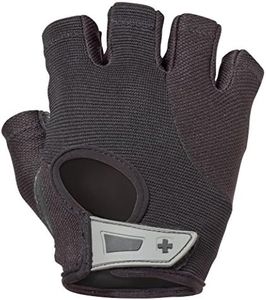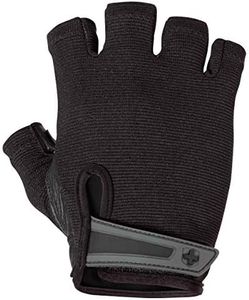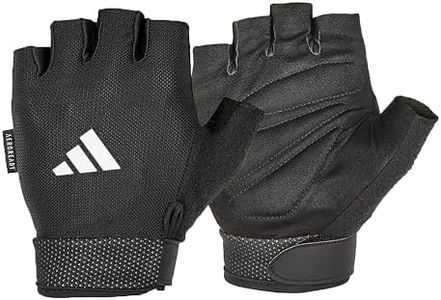We Use CookiesWe use cookies to enhance the security, performance,
functionality and for analytical and promotional activities. By continuing to browse this site you
are agreeing to our privacy policy
10 Best Gym Gloves
From leading brands and best sellers available on the web.Buying Guide for the Best Gym Gloves
Choosing the right gym gloves is important if you want to protect your hands during workouts, get a better grip, and keep your workouts comfortable. Gym gloves can vary in material, fit, padding, grip, and other features, so knowing how these aspects match your needs will help you choose what’s right for your training style—whether it’s weightlifting, cross-training, or general fitness.MaterialThe material of gym gloves determines their durability, flexibility, breathability, and feel on your hands. Common materials include leather, synthetic fabrics, and mesh. Leather is strong and offers great protection but may get hot and requires break-in time. Synthetic fabrics are usually lighter and more breathable, making them better for long workouts or those who sweat a lot. Mesh materials are specifically included to improve airflow, which helps keep your hands cool and dry. If you do heavy lifting and want extra protection, leather might suit you; if you want something lightweight with good ventilation, pick gloves with more synthetic or mesh sections.
PaddingPadding affects how much cushion and protection your hands get, especially during exercises that put pressure on your palms. Thickly padded gloves offer more comfort and can reduce calluses, but may decrease your feel for the weights or bar. Thin or minimal padding gives you better grip feedback but less cushioning. Choose heavier padding if your hands blister or hurt easily, or if you lift heavy weights. Lighter padding is best for those who want maximum grip sensitivity, or who do a lot of pull-ups, kettlebell work, or high-rep activities.
GripGrip features help prevent slipping when lifting weights or using gym equipment. Some gloves have textured palms or silicone/rubber patterns that boost traction. A strong grip is crucial if you struggle with sweaty palms or slippery bars, while smoother gloves work if you want a more natural feel of direct contact. Consider how much grip assistance you need—if you often feel weights slip, gloves with extra-grip textures are a good choice. If not, basic palms may be enough.
Fit and SizingA well-fitting glove is essential for comfort and safety. Too tight and your hands might go numb; too loose and the gloves could slip, defeat the purpose, or cause blisters. Most brands offer sizing charts—measure your hand and compare to guide charts available. There are also adjustable features like Velcro straps or elastic cuffs for a more personalized fit. Pick gloves that are snug but not restrictive, allowing full movement of fingers without bunching at the palm.
Wrist SupportSome gym gloves come with built-in wrist wraps or straps to offer extra wrist stability during heavy lifts. This is especially useful for people who have weak wrists or regularly do exercises that put a lot of strain on this joint, like bench presses or overhead lifts. If your workouts include a lot of heavy lifting or you're prone to wrist pain, gloves with wrist support add safety. If your routines are light or wrist pain is never an issue, simpler gloves without straps may be more comfortable.
BreathabilityBreathability refers to how well the gloves allow heat and moisture to escape. Good ventilation (such as mesh panels or holes) helps keep your hands dry and minimizes odor. If your hands sweat a lot or you train in a warm environment, prioritize gloves with high breathability. For short workouts or if sweat isn’t a major problem for you, this may be less critical.
Finger Length and CoverageGym gloves may come in full-finger, half-finger, or fingerless styles. Half-finger or fingerless gloves give your fingertips more freedom, help improve grip, and keep you cooler. Full-finger gloves provide extra protection and warmth but can be bulkier. Your choice depends on what kind of protection and dexterity you want—go for minimal coverage for flexibility and breathability, or full coverage for extra protection.

